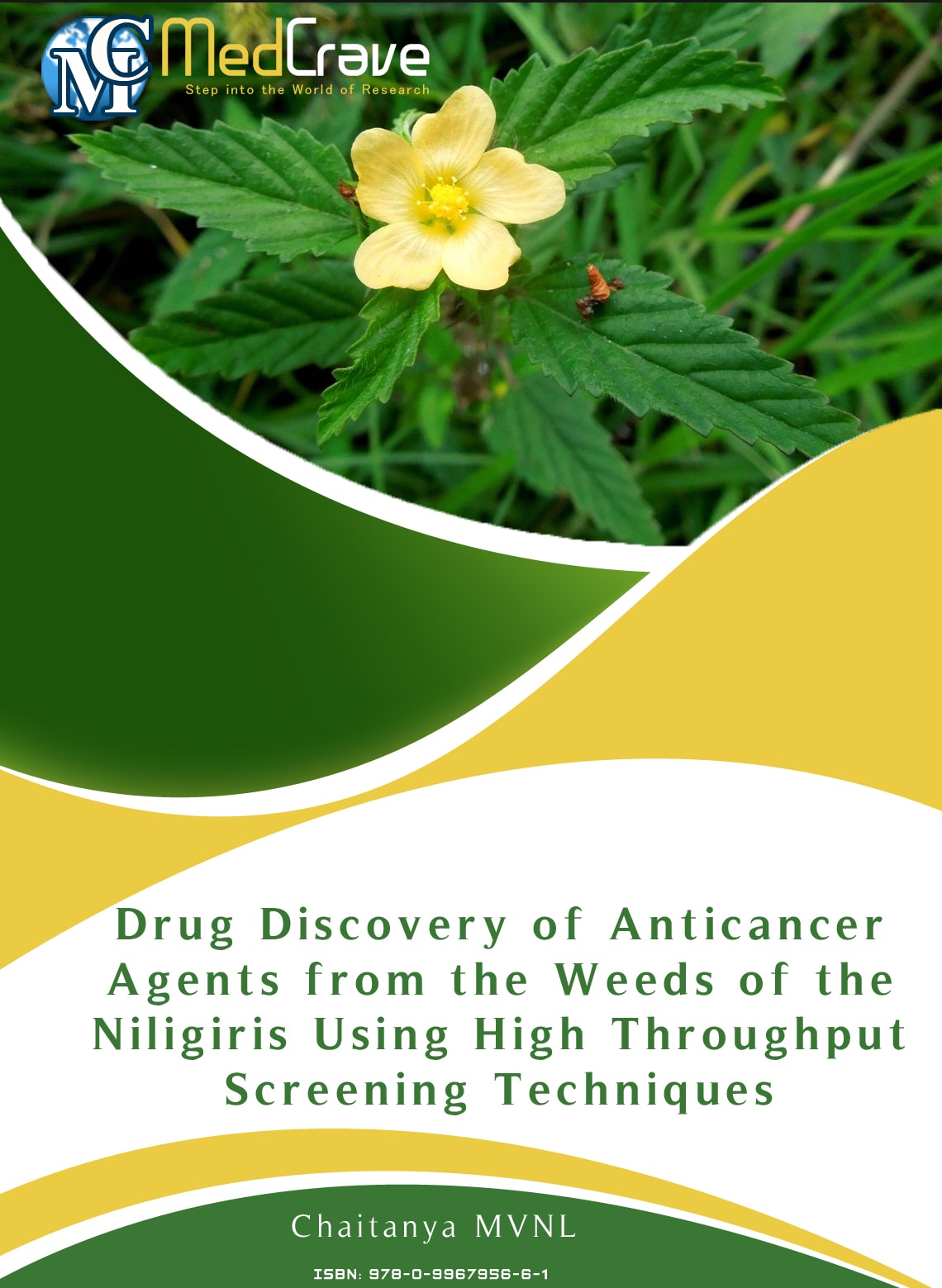eBooks View all | By AtoZ | By category
Drug Discovery of Anticancer Agents from the Weeds of the Niligiris Using High Throughput Screening Techniques
By Chaitanya MVNL
Jagadguru Sri Shivarathreeshwara University, India
Complementary & Alternative Medicine
Published: Nov 16, 2016 | pg. no: 72
Abstract: Background: Weeds are store houses of complex bioactive secondary compounds which are the lead molecules for the discovery of pharmaceuticals like Adoniside from Adonis vernalis L., Asiaticoside from Centella asiatica , Silymarin from Silybum marianum (L.) Gaertn etc., which proved that weeds are the richest sources of new pharmaceuticals against many resistant diseases like cancer and tuberculosis. The Nilgiris is gifted with richest flora in which lot of medicinally important plants are present Objective: The main objective of this research work is to identify any six prominent weed plants of Nilgiris and to establish the phytochemical and pharmacological importance as a human dual topo-poisons I & II and to make them to utilize commerciall Methods: After a thorough field survey and literature survey six major weeds of the Nilgiris from 56 identified weeds have been taken for phytochemical and biological studies (Anticancer and wound healing), Molecular docking studies, cell cycle analysis and human topopoison I & II assays. Results: All the weeds proved to have interesting secondary metabolites like phenols (36.9 to 119.9 ?g/g gallic acid equivalents), alkaloids (106.7 to 154.8 ?g/g atropine equivalents) and flavonoids (43.0 to 159.6?g/g quercetin equivalents) and saponins (14.2 to 25.0 % w/w). First time two flavonoids ( Narangenin and 7 Methoxy Hesperetin ) were isolated from the aerial parts of Erigeron karvinskianus (Asteraceae). A novel saponin glycoside (Tetrahydro-2-(hydroxymethyl)- 6-(octadecahydro- 2, 7, 10a-trimethyl-1-propylchrysen-8-yloxy)-2H-Pyran-3, 4, 5-triol was isolated from the aerial parts of Solanum mauritianum (Solanaceae) and a novel ferulic acid derivative 1E-1-hydroxyprop-1-en-2-yl (2E)-3-(4-hydroxy- 3-methoxyphenyl) prop-2-enoate) was isolated from the aerial parts of Cytisus scoparius (Fabaceae). All the isolated compounds showed good in vitro cytotoxic activity on MCF-7, HCT-116, and A-549 cell lines 116 with CTC 50 values ranging from 20.0 to 92.0 ?g/ml and proved to be safe on Vero cell lines with CTC50 values 383 to 472 ?g/ml in compare to standard quercetin and the compounds also showed good in-vitro wound healing activity on HDF cell lines with active concentration level of 50- 12.5 ?g/ml. Based on the molecular docking studies, the isolated compounds 2 & 4 showed dual human topo- poison activity at 400 ?g/ml dose. All the compounds arresting the cells at S-phase and G2 M –phase on HELA cell lines. Conclusion: The isolated compounds can be good lead molecules in anticancer drug discovery. The topo-poison I and II studies proved that the compounds II & IV only having Dual topo-poisoning activity. However, further in-depth studies have to be carried out on these identified molecules and the plants in-order to increase its clinical significance through structure modification of functional groups. The current research work may give a platform for the discovery of novel dual human topo I & II isomerase poisons, where there is a current demand in the anticancer research. Hence the research work proved that these weeds have good medicinal values and can be utilized commercially and be good economical sources to farmers as they have many good novel molecule
View eBook
